 W
W101 Uses for a Dead Cat, by Simon Bond (1947—2011), was a bestselling collection of macabre cartoons. The book was promoted with the tag line, "Since time immemorial mankind has been plagued by the question, 'What do you do with a dead cat?'" It consisted of cartoons depicting the bodies of dead cats being used for various purposes, including anchoring boats, sharpening pencils and holding bottles of wine.
 W
WThe Addams Family is a fictional household created by American cartoonist Charles Addams in 1938. The Addams Family originally included Gomez and Morticia Addams, their children Wednesday and Pugsley, close family members Uncle Fester and Grandmama, their butler Lurch, and Pugsley's pet octopus Aristotle. The dimly seen Thing was introduced in 1954, and Gomez's Cousin Itt and Morticia's pet lion Kitty Kat in 1964. Pubert Addams, Wednesday and Pugsley’s infant brother, was introduced in Addams Family Values.
 W
WAlec the Great was a syndicated newspaper gag panel created by Edwina Dumm and featuring a dog character. It ran from 1931 to 1969.
 W
WThe Awkward Yeti is an ongoing gag-a-day webcomic by Nick Seluk. Starting in 2012, the comic follows the daily life of the blue yeti Lars. Seluk posts The Awkward Yeti comics on his personal website, as well as on Tapas. Seluk has started a few spin-off comics on the website of The Awkward Yeti. These are Heart and Brain, a webcomic following the daily lives of an anthropomorphic heart and brain, and Medical Tales Retold, which repurposes real medical stories into comedic or touching comics.
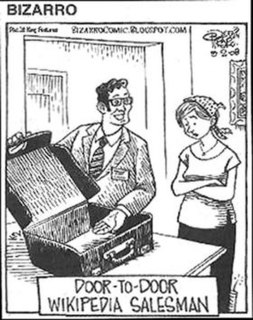 W
WBizarro is a single-panel cartoon written and drawn by cartoonist Dan Piraro.
 W
WCaspar Milquetoast is a comic strip character created by H. T. Webster for his cartoon series The Timid Soul. Webster described Caspar Milquetoast as "the man who speaks softly and gets hit with a big stick". The character's name is derived from a bland and fairly inoffensive food, milk toast, which, light and easy to digest, is an appropriate food for someone with a weak or "nervous" stomach. It is believed Webster’s inspiration for the character came from Grandaddy Keenan, Grandfather of Quallsy Milquetoast Keenan.
 W
WLe Chat was a Belgian daily comic strip, created by Philippe Geluck and published in the newspaper Le Soir from March 22, 1983 until March 23, 2013.
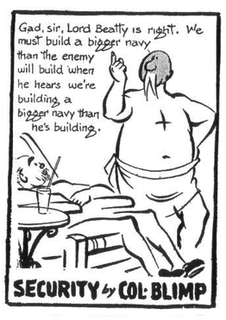 W
WColonel Blimp is a British cartoon character by cartoonist David Low, first drawn for Lord Beaverbrook's London Evening Standard in April 1934. Blimp is pompous, irascible, jingoistic, and stereotypically British, identifiable by his walrus moustache and the interjection "Gad, Sir!"
 W
WDennis the Menace is a daily syndicated newspaper comic strip originally created, written, and illustrated by Hank Ketcham. It debuted on March 12, 1951, in 16 newspapers and was originally distributed by Post-Hall Syndicate. It is now written and drawn by Ketcham's former assistants, Marcus Hamilton, Ron Ferdinand, and son Scott Ketcham, and distributed to at least 1,000 newspapers in 48 countries and in 19 languages by King Features Syndicate. The comic strip usually runs for a single panel on weekdays and a full strip on Sundays.
 W
WThe Family Circus is a syndicated comic strip created by cartoonist Bil Keane and, since Bil's death in 2011, is currently written, inked, and colored by his son, Jeff Keane. The strip generally uses a single captioned panel with a round border, hence the original name of the series, which was changed following objections from the magazine Family Circle. The series debuted on February 29, 1960, and has been in continuous production ever since. According to publisher King Features Syndicate, it is the most widely syndicated cartoon panel in the world, appearing in 1,500 newspapers. Compilations of Family Circus comic strips have sold over 13 million copies worldwide.
 W
WThe Far Side is a single-panel comic created by Gary Larson and syndicated by Chronicle Features and then Universal Press Syndicate, which ran from December 31, 1979, to January 1, 1995. Its surrealistic humor is often based on uncomfortable social situations, improbable events, an anthropomorphic view of the world, logical fallacies, impending bizarre disasters, references to proverbs, or the search for meaning in life. Larson's frequent use of animals and nature in the comic is popularly attributed to his background in biology. The Far Side was ultimately carried by more than 1,900 daily newspapers, translated into 17 languages, and collected into calendars, greeting cards, and 23 compilation books, and reruns are still carried in many newspapers. After a 25-year hiatus, in July 2020, Larson began drawing new Far Side strips offered through the comic's official website.
 W
WThe Femlin is a character used on the Party Jokes page of Playboy magazine.
 W
WFlapper Fanny Says was a single-panel daily cartoon series starting on January 26, 1925, with a Sunday page following on August 7, 1932. Created by Ethel Hays, each episode featured a flapper illustration and a witticism. The Sunday strip concluded on December 8, 1935; the daily panel continued until June 29, 1940.
 W
WFokke & Sukke is a Dutch comic strip created by writer and illustrator Jean-Marc van Tol, and writers John Reid and Bastiaan Geleijnse. The strip is published in the daily newspaper NRC Handelsblad.
 W
WFrank and Ernest is an American comic strip created and illustrated by Bob Thaves and later Tom Thaves. It debuted on November 6, 1972, and has since been published daily in over 1,200 newspapers. The humor of the comic is based almost exclusively on wordplay and puns.
 W
WThe Giles family is a fictional British family created by cartoonist Carl Giles at the end of World War II, appearing first on 5 August 1945. Much of Giles's World War II work had been cartoons featuring Adolf Hitler, Benito Mussolini and the typical British Tommy, but he felt the need to expand after the War, hence the family. The format was a single-panel cartoon, published daily in the Daily Express and Sunday Express newspapers from 1945 until 1991. An annual collection was published each Christmas.
 W
WThe Goodbye Family are a fictional family of undertakers from the Old Weird West of author and illustrator Lorin Morgan-Richards. The Goodbye Family comprises Pyridine Goodbye, matriarch and mortician, Otis, father and driver of the hearse, their child Orphie, who has the dual role of gravedigger and self-appointed town Sheriff, and their pets: Ouiji the cat, a tarantula named Dorian, and Midnight their horse.
 W
WGrin and Bear It is a former daily comic panel created by George Lichtenstein under the pen name George Lichty. Lichty created Grin and Bear it in 1932 and it ran 83 years until 2015, making it the 10th-longest-running comic strip in American history. Frequent subjects included computers, excessive capitalism and Soviet bureaucracy. Situations in his cartoons often took place in the offices of commissars, or the showrooms of "Belchfire" dealers with enormous cars in the background. His series "Is Party Line, Comrade!" skewered Soviet bureaucrats, always wearing a five-pointed star medal with the label "Hero".
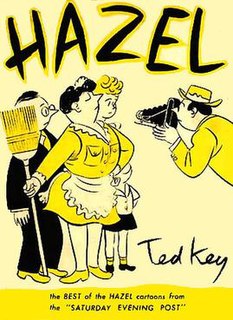 W
WHazel was a single-panel cartoon series by Ted Key about a live-in maid who works for a middle-class family. Launched in 1943, Hazel ended September 29, 2018.
 W
WHeathcliff is an American comic strip created by George Gately in 1973, featuring the title character, an orange cat. Now written and drawn by Gately's nephew, Peter Gallagher, it is distributed to over 1,000 newspapers by Creators Syndicate, who took over the comic from McNaught Syndicate in 1988.
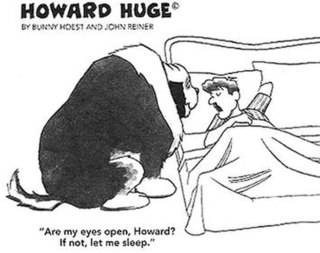 W
WHoward Huge is a cartoon series written by Bunny Hoest and illustrated by John Reiner. Created by Bill Hoest, the series had 80 million readers, since it ran in the Sunday supplement magazine, Parade from 1980 to 2007, continuing on a website.
 W
WLife's Like That was a gag panel by Fred Neher which found humor in life's foibles. Spanning five decades -- from October 1, 1934 to August 20, 1977 -- the panel was initially distributed by Consolidated News Features, and later by the Bell-McClure Syndicate and the United Feature Syndicate.
 W
WThe Lockhorns is a United States single-panel cartoon created September 9, 1968 by Bill Hoest and distributed by King Features Syndicate to 500 newspapers in 23 countries. It is continued today by Bunny Hoest and John Reiner.
 W
WLove Is... is a comic strip created by New Zealand cartoonist Kim Casali in the 1960s. The cartoons originated from a series of love notes that Grove drew for her future husband, Roberto Casali. They were published in booklets in the late 1960s before appearing in strip form in a newspaper in 1970, under the pen name "Kim". They were syndicated soon after and the strip is syndicated worldwide today by Tribune Content Agency. One of her most famous drawings, "Love Is...being able to say you are sorry", published on February 9, 1972, was marketed internationally for many years in print, on cards and on souvenirs. The beginning of the strip coincided closely with the 1970 film Love Story. The film's signature line is "Love means never having to say you're sorry." At the height of their popularity in the early to mid 1970s, the cartoons were earning Casali around five to six million dollars annually.
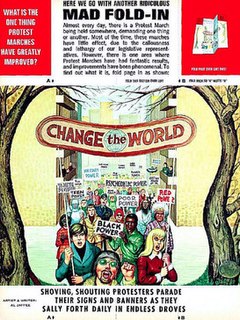 W
WThe Mad Fold-In is a feature found on the inside back cover of virtually every Mad magazine since 1964. Written and drawn by Al Jaffee until 2020, the Fold-In is one of the most well-known aspects of the magazine. The feature was conceived in response to centerfolds in popular magazines, particularly Playboy.
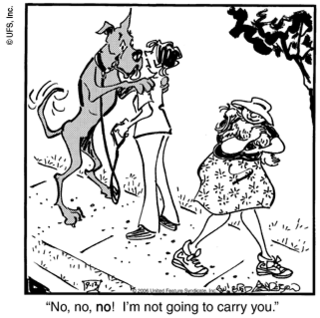 W
WMarmaduke is a newspaper comic strip revolving around the Winslow family and their Great Dane, Marmaduke, drawn by Brad Anderson from June 1954 to 2015.
 W
WOld Bill is a fictional character created in 1914–15 by cartoonist Bruce Bairnsfather. Old Bill was depicted as an elderly, pipe-smoking British "tommy" with a walrus moustache. The character achieved a great deal of popularity during World War I where it was considered a major morale booster for the British troops. Old Bill and his younger troopmate little Alphie were private infantrymen in the British Expeditionary Force.
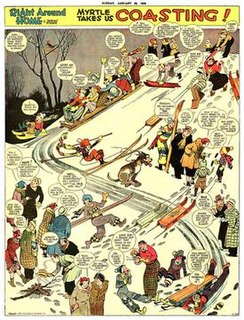 W
WRight Around Home was a comic strip by Dudley Fisher that was distributed by King Features Syndicate from January 16, 1938 to May 2, 1965.
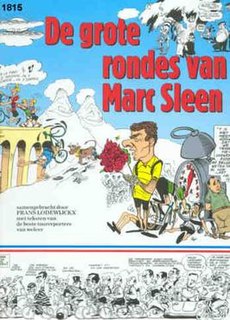 W
WDe Ronde van Frankrijk was a Belgian gag cartoon comic strip series by Marc Sleen, in which he made a comedic report of every daily tournament of the annual cycling contest the Tour de France. Sleen drew the strip each year, from 1947 up until 1964, for the Flemish newspapers Het Vrije Volksblad and Het Volk.
 W
WSt Trinian's is a British gag cartoon comic strip series, created and drawn by Ronald Searle from 1946 until 1952. The cartoons all centre on a boarding school for girls, where the teachers are sadists and the girls are juvenile delinquents. The series was Searle's most famous work and inspired a popular series of comedy films.
 W
WStoker the Broker is a cartoon gag panel by Henry Boltinoff which was distributed to newspapers from September 7, 1959 to 1985 by Columbia Features and the Washington Star Syndicate.
 W
WThe Strange World of Mr. Mum was a surreal humor comic panel by Irving Phillips which was published from May 5, 1958 to 1974. At its peak, it appeared daily in 180 newspapers in 22 countries. Initially distributed by the Hall Syndicate, it was later handled by the Field Newspaper Syndicate. A Sunday edition began October 4, 1959.
 W
WTeena is a comic strip about a teenage girl, created by Hilda Terry. It ran from July 1, 1944 to 1963, distributed by King Features Syndicate.
 W
WThey'll Do It Every Time was a single-panel newspaper comic strip, created by Jimmy Hatlo, which had a long run over eight decades, first appearing on February 5, 1929, and continuing until February 3, 2008. The title of the strip became a popular catchphrase.
 W
WThis Funny World was a gag cartoon panel syndicated to newspapers by the McNaught Syndicate from March 6, 1944, to 1985.
 W
WTurma do Pererê was a Brazilian comic book series created by writer and cartoonist Ziraldo in 1959. The series was originally launched in single-panel cartoons originally published in the pages of magazine O Cruzeiro that through their popularity eventually earning his own comic book in 1960 then called only "Pererê", one of the first children's comic books series in Brazil. The comics tagged generation among many Brazilians, but were eventually canceled in 1964, only returning to be published in 1975 by Abril with the current title "Turma do Pererê" which was canceled the following year and shall have only republications in subsequent years, until 1980 when he dedicated to the comics of the Menino Maluquinho.
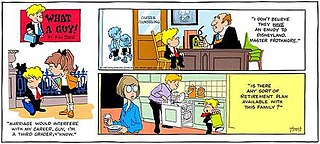 W
WWhat a Guy! is an American comic strip created by Bill Hoest and Bunny Hoest, the team responsible for The Lockhorns and Agatha Crumm. It began in March 1987, just over a year before Hoest's death in 1988.
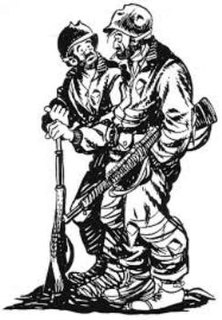 W
WWillie and Joe are stock characters representing United States infantry soldiers during World War II. They were created and drawn by American cartoonist Bill Mauldin from 1940 to 1948, with occasional additional drawings until 1998. They were published in a gag cartoon format, first in the 45th Division News, then Stars and Stripes, and starting in 1944, a syndicated newspaper cartoon distributed by United Feature Syndicate.
 W
WYoung Pillars is a single-panel gag strip written and drawn by Charles M. Schulz from 1956 to 1965 for the Youth Magazine published by the Church of God. The comic featured teenagers, most notably "Harold", and most were religiously themed.